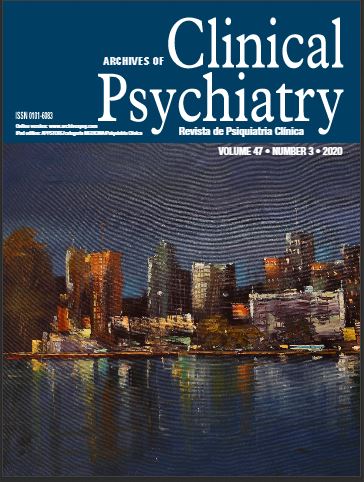Social communication impairments and restricted, repetitive patterns ("Kodawari") considered from the "Comprehension" section of the WISC-IV in autism spectrum disorder
DOI:
https://doi.org/10.1590/0101-60830000000237Keywords:
Autism spectrum disorder, attention-deficit/hyperactivity disorder, content analysis, DSM-5, WISCAbstract
Background: Many studies have used the Wechsler Intelligence Scale (WISC) to examine the characteristics of autism spectrum disorder (ASD). However, most studies have been based on profile analysis, not on content analysis. Objective: The objective of the present study was to apply the WISC-IV to clinical assessment of ASD and clarify how the characteristics of the disorder were reflected in specific items. Methods: The study participants were 20 patients aged 5-16 years diagnosed with ASD according to the Diagnostic and Statistical Manual of Mental Disorders, Fifth Edition (DSM-5). We recruited 20 patients with attention-deficit/hyperactivity disorder (ADHD) and 20 patients with other disorders (neurotic disorders) as controls. We then compared the scores of the ninth item of the WISC-IV ("Comprehension") among the three groups. Results: The differences observed between the ASD vs. the other disorders group were not significant by the standard scoring method. Thus, a two-level scoring method of 0 and ≥1 point was adopted. As a result, significantly more participants in the ASD group scored 0 points compared with the ADHD and other disorders group
Downloads
Downloads
Published
Issue
Section
License
Once accepted for publication, the manuscript becomes permanent property of the Archives of Clinical Psychiatry. This copyright transfer subsumes exclusive and unlimited entitlement of the Archives of Clinical Psychiatry to publish and distribute the full contents of articles in whichever publishing medium, including press and electronic media, in Brazil and abroad.
Manuscripts are accepted with the understanding that the Editor and the editorial staff have the right to make revisions aimed at greater conciseness, clarity, and conformity with Journal style, of course without changing its content.


